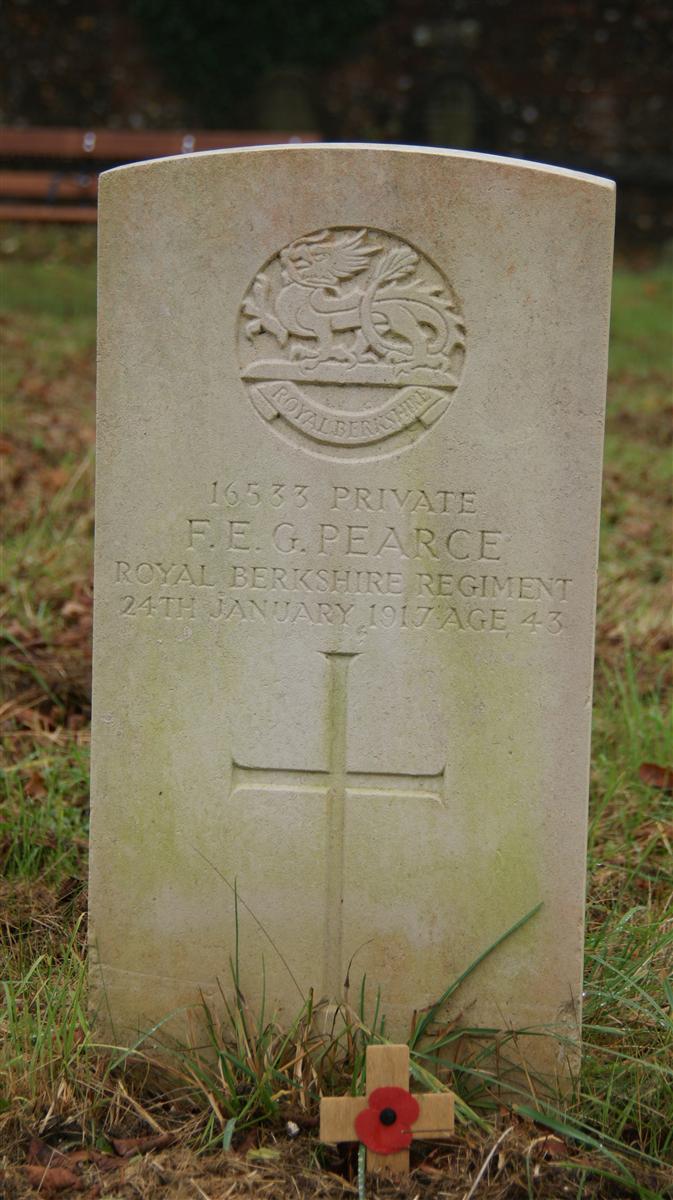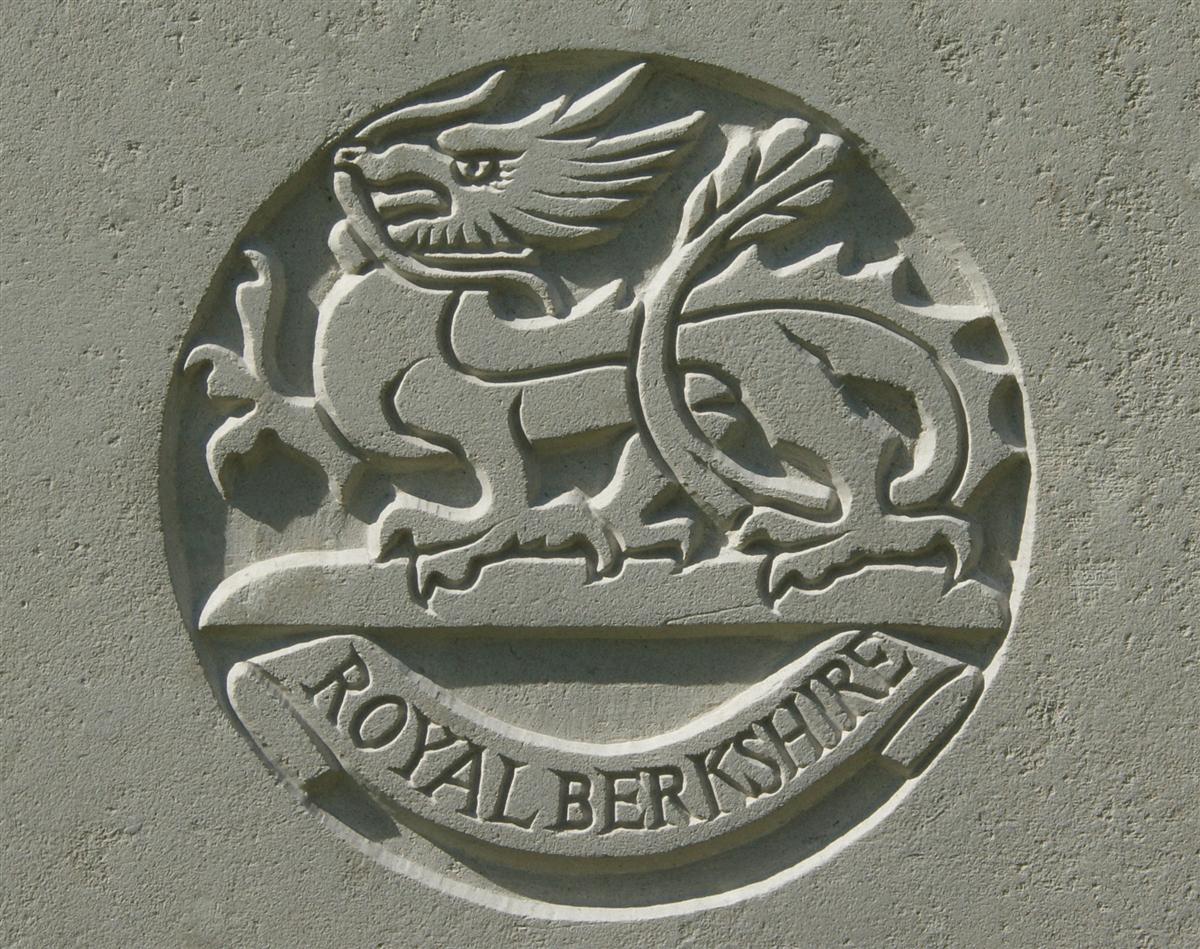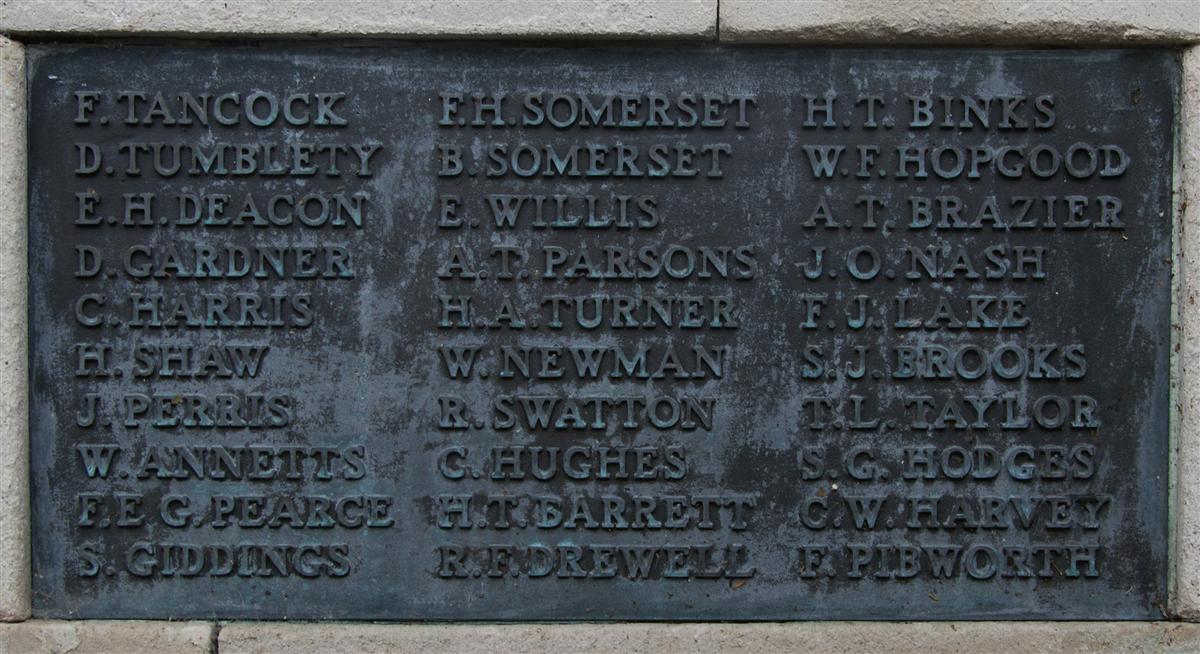Frederick Edward George Pearce
Private 16533 Frederick Edward George Pearce, 2nd Battalion, Royal Berkshire Regiment.
Frederick was born in Newbury in 1875 the youngest child of Charles Pearce and his wife Harriet née North. Charles was a labourer, later a gardener, who married Harriet in 1855, they lived in the Old Newtown Road / City area of Newbury for all of their married life raising eight children Charlotte Ann (born 1857), Mary Jane (1859), David Charles (1861), Lavinia Alice (1862) , William Alfred (1865), Eliza (1868), Henry John ( 1871) and Frederick. Harriet died in 1886 leaving Charles a widower, however, most of their children were adult by this time and even Frederick, the youngest, was eleven and would soon enter the adult world of employment. Charles moved away from the City area in which he had lived most of his life to No 3 Blue Ball Cottages (somewhere near to the Blue Ball public house in Greenham Road) where his home became overflow accommodation for George Bryant and his large family who lived next door in No 4. George was married to Charles’ third daughter Lavinia Alice. Charles died in 1914 aged 83 and was buried in Newtown Road Cemetery, Newbury.
 Frederick's grave in Newtown Road Cemetery |
When Frederick left home to make his way in the world, he too worked as a labourer. In 1892 he was working for a Mr Turner when he decided to enlist in the local militia, the 3rd Battalion of the Royal Berkshire Regiment. He was 18, 5ft 6¾in tall, with a fresh complexion, blue eyes and brown hair. The Militia became the Territorials in 1907, and were part time soldiers, with a role in home defence; they were not expected to serve overseas. However, when a need arose for more troops abroad, men of the Militia would be asked to volunteer. Many did so and would be transferred to the regular battalions or constituted into new units for the duration of the emergency. Such an emergency arose during the Second Boer War of 1899-1902. Yeomanry (the cavalry arm of the Militia) volunteers were constituted into regional companies of the ‘Imperial Yeomanry’; the 2nd Battalion of the Royal Berkshire Regiment was in Cape Town when the war began and remained in South Africa for the duration, drafts of men were sent out throughout the conflict.
It has been reported that Frederick served during the Boer War, in which case he would probably have been sent out with a draft of reinforcements/replacements. However, there is no record of his receiving a campaign medal (Queen’s or King’s South Africa Medal), suggesting that he did not take any significant part in the war.
Back in Newbury he had married Mary Smith in 1898 and found a home in Northcroft Lane, their eldest child, Gertrude Maud, was born in late 1901, a second daughter, Beatrice May, arrived in 1903. At some point the family moved out of town to the village of Compton a few miles north. Here Frederick worked as a farm labourer and a third child, Frederick Edward John, was born in 1908. In 1912 the family moved back to Newbury, where they lived at 6 Albert Terrace, Albert Road.

The regimental badge of the Berkshire Regiment, as used on CWGC headstones. |
He fought with the battalion for almost two years, through major actions and the day-to-day existence of life in the trenches and nearby billets.
In November 1916 the 2nd Battalion was taken out of the line to rest, regroup and train. After their exertions over the previous months in several phases of the battle of the Somme this was a welcome respite. Over the New Year period, 30 December to 1 January 1917 the battalion was moved up towards the front line to act as the brigade reserve while other battalions in the brigade manned a section of the line. Acting as the reserve was a safer pastime than manning the firing line, but the men would not be sitting safely in bunkers all the time, they may well be used in working parties, maintaining communication trenches, or other similar activities that could bring them into areas where death was just a shell burst away. It is not known when Frederick received the wounds that would cause his death, but this seems to be the most likely period. The battalion war diary records that 7 Ors (other ranks) were sent to hospital on 30 December, 2 on 31 December and 1 on 1 January. The man hospitalised on New Year’s Day was sick rather than wounded, so it seems likely that Frederick was one of the nine sent for treatment on the previous two days.
The description of his wounds (below) are consistent with shrapnel damage from a shell burst. He would have been patched up in France but was soon shipped back to England for treatment. He was taken to Windsor Hospital, arriving there on 2 January. Sadly, while being treated he succumbed on 24 January to lockjaw (tetanus) an often fatal infection most commonly associated with a wound caused by rusty metal.
His passing was reported in the local paper a week later:
Newbury Weekly News - Local War Notes, 1 February 1917
The death is recorded of another Newbury man in the great war, in the person of Pte E G Pearce, of the 2nd Berks, of Albert-road. He was an old Militiaman, and also served ten years in the Berks previous to the present war, going through the South African Campaign. When the present conflict broke out, he volunteered again, and joined up with his old regiment, although having a wife and four children. Being an old soldier, within two months he was sent over to France, and in one of the advances got wounded in the head. Now, after two years fighting, he was brought over to England on the 2nd of January, with more severe wounds in the head and spine, and taken to Windsor Hospital, where he passed away on the 23rd, lockjaw having set in. He was brought to Newbury on Friday last, and buried on Monday in this week, the service being held at the Baptist Church, conducted by the Rev C V Pike. The coffin was covered with the Union Jack, while the mourners were his wife and three children, Mrs Briant and Mrs Turner (two sisters), Messrs D C and W A Pearce (brothers), Pte A Briant and Daisy Briant (nephew and niece), Mrs J Smith and Mrs R Swain (sisters-in-law), and other relatives. Some wounded soldiers were also present at the graveside. Included in the wreaths which were sent by all the above, was one from his widow and children, “In loving remembrance of a dear husband and a good father.”
 Frederick's name on Newbury War Memorial. (lower middle) |
Frederick was buried in Newtown Road Cemetery where his grave is marked by a Commonwealth War Graves Commission headstone. He is also remembered on Tablet 13 of the Newbury Town War Memorial and on the memorial in Newbury Baptist Church.
Frederick was 43 when he died; as he was considerably younger than his siblings it is not a surprise that none of them were casualties of this dreadful war. However, the age gap meant that Frederick’s siblings were parents and it was the next generation of the family that took most part in the military effort.
Private 14670 David Charles Pearce, Royal Berkshire Regiment was the son of Frederick’s brother of the same name; he died in France in May 1918 and is also commemorated on the Newbury Town War Memorial. David’s story includes details of his brothers who also served and of his brother-in-law, Alfred William Dean, who also died serving his country.

Find a memorial :
| Died this day: | |
| 15 January 1943 | |
| L C Lawrence | |
| Newbury |

Like this site? Show your appreciation through a donation to a great charity.